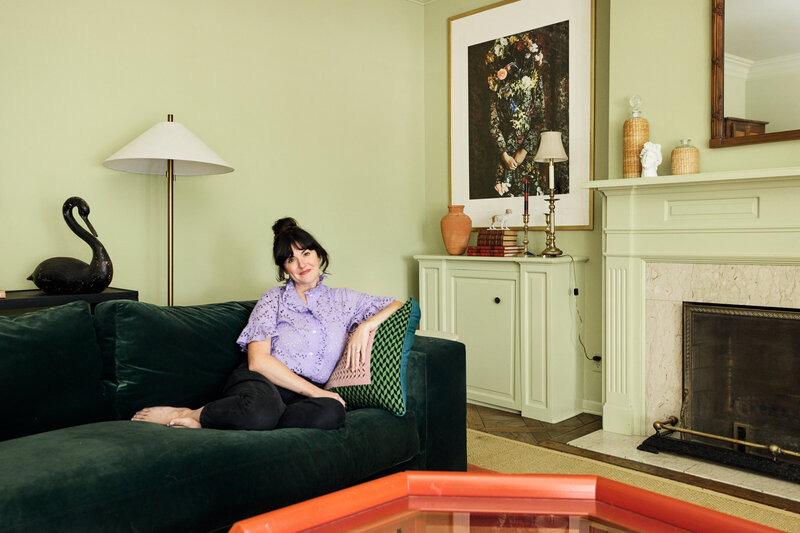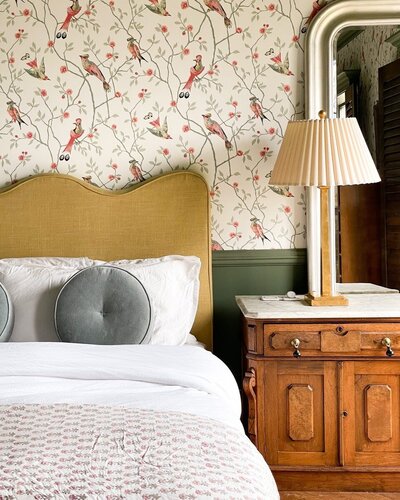

The last few years were a bit rough in the work department. Literally, as in my department at the university where I worked. The centrifugal force of negativity and warring factions was, at times, so overpowering – so overwhelming – I’d arrive home needing to either unload every nuance of every conversation on my spouse or pour myself a strong gin & tonic.
Most days, I’d need both.
If my sweet groom of 20+ years wasn’t home before me from his own “dynamic” (that’s a euphemism) workplace, I’d do an internal happy dance the second I’d see his silhouette exiting garage door and heading toward our back door—me, ready to pounce with my stories and rants from the day.
“… And then she …! … Can you believe …? … The nerve of ….!! And the gall of ….!!! WTF?!?!”
In response, of course, I expected my loving, wise spouse to offer precisely the perfect tripartite response, in this order: 1) empathic words talking me off the ledge and soothing my academic-department-battle-wounds; 2) non-trite observations that (mostly) supported my own clearly-overly-emotional analysis of the situation—at least until I had a second drink, at which time he could and should, and usually did, gently and oh-so-carefully challenge my perspective, if necessary; and 3) ultimately, sage advice about how to wisely and smartly navigate the situation, short of me submitting my resignation, walking lockstep with the next set of graduates away from the dream job I had worked the past 28 years to achieve: a tenured, full professor at a university with a mission I adored and students for whom I’d do anything.
“But she actually… WTF?!??!”
Oh, and it wasn’t just infrequent evening spousal-ledge-walking-back-sessions I needed; during that phase of my (now former—but that’s a story for a different day/different post) department’s implosion, it was a near-nightly ritual of my expressive, sometimes profane-filled debrief on the day, one carefully (un)woven thanks to my husband’s calm, measured, and highly-empathic listening and coaching. I rather expected my spouse to know precisely what to say because (amen) he had spent the past two and a half decades navigating the “unique” (euphemism) waters of higher education himself—he on the administrative side (helpful!) and with a PhD in human development in his back-pocket (super helpful).


Or are we?
According to Dr. Eli Finkel, ours is more accurately a match made of the current social trends in marriage.
Finkel is a marriage researcher and author of one of my favorite current books: The All-or-Nothing Marriage. Definitely, read it. Call me a Finkel fangirl, yes: I’m obsessed with his game-changer insights into why marriage for most of is currently both so hard AND (yay!) so worth it.
And to understand his explanation of all of the above, we need a quick marriage history-lesson, one he offers (thank you, Eli!) in highly-accessible terms. I promise you won’t be bored. Basically, we in U.S. America have witnessed three major eras of marriage:
- The Pragmatic Era—from the colonial period until about 1850—when marriages emphasized spouses meeting each other’s basic survival and economic needs. Think farm-family producing enough food to keep the brood fed and creating stable-enough shelter so y’all didn’t literally freeze (literally, to death) during winter.
- The Loved-Based Era—from about 1850 – 1965—during which time spouses shifted to helping each other meet their needs for love and intimacy. The shift was able to happen because, well, survival needs were more often, easily, and efficiently being met (thank you, industrialization), opening the door for romance and emotion to enter the marriage-equation. Before this time, the notion that you’d marry someone because you “love” them was mostly bizarre. And just plain old unwise. To be clear: Sometimes love was a welcome side-effect of the pragmatic marriage, but it was almost never the precondition. And as if love and intimacy weren’t enough, enter ….
- The Self-Expressive Era—from about 1965 and continuing today. It’s during this period we saw marriage shift to what we have today, although most of us probably couldn’t expressly articulate it: a partnership with someone who can help us become our best, most exciting and authentic selves. Think peak of Maslow’s Hierarchy where, at the summit, is a relationship that meets all of our lower-and middle-level needs (food, shelter, love, intimacy, respect, trust) AND meets our highest-level needs, those of personal growth, self-actualization, and self-expression! (ßdeserves an exclamation point, amiright?)
And, this is the big-YAY part: It’s in self-expressive marriages that we can find greater joy and fulfillment with our spouses and in life than in any type of marriage before! Can I get three YAYs and an exclamation point for that!?
But (yes, there’s a but here), Finkel and similar researchers would say marriage is indeed harder now than ever before in the history of marriage. And (but?) two things are essential to know if you are currently or plan on attempting to scale to the summit of the 21st century, self-expressive, highly-satisfying marriage-mountain—one where the views are indeed stunning, the feat is thrilling, and, of course, the oxygen is thinner (so you’ll need much training to reach and then thrive at this high marriage-altitude). First, marriage is harder now not because we expect more from our spouses than in the past; rather, it’s harder because there’s been a rather radical shift in the material—the substance—of our expectations. Yes, we expect our spouses to remind us to see a doctor; act as our best friend; co-parent with expertise and grace; and perform as exciting, intimate partners. AND (but?), we also expect them to be co-pilots on the voyage of personal growth/self-discovery/authentic-identity-finding. Whew, that’s a lot, right?
Not surprisingly, all that doesn’t come without some serious investment in time, energy, and attention. Which brings me to point two: If (“if” being the key word here), IF you put in the work to achieve a self-expressive marriage, the payoff is immense. Yes, the pursuit of marital happiness is harder while, simultaneously, the value of achieving it is greater. Perhaps this is why, as Finkel points out “… the average marriage has been getting worse over time, even as the best marriages have been getting better.” (p. 5)


About the “work” part of the equation? Here’s where it’s going to take a little getting-real/getting-honest, folks. If you really want to be among those with the most excellent and happiest marriages of today, it requires that you align what you’re asking of your marriage with what we’re willing to invest.
Say more?
Well, so says my buddy Eli Finkel (okay, so I don’t really know him… yet. Although a face-to-face chat has made it to the top-10 on my nerd-list for reaching academic-nirvana): Current marriage is really a supply-and-demand model. Is each spouse investing enough resources and the right kind of resources to meet the needs they are seeking to fulfill? Sounds cold and calculated, I know. But, please do accept my strong (warm) recommendation to order yourself a copy of his book in which he fleshes it all out. And it’s not all theory or history; for most of us, the most important part of his 318-page, easy-to-read page-turner is part four, chapters 8-12, where he lays out science-based tips for “hacking” your marriage, each tip one that can increase the odds you’ll have more of the “ALL” in the all-or-nothing marriage model.
Me?
I sat cross-legged across from my husband, both of us with G&Ts in hand, pouring over the complex social and psychological strategies I’d use the next day to navigate the minefield of my department. And then we grilled salmon. Helped one teen with college applications. Mused with the other what was trending in prom dress styles (what did people do before Pinterest?). After dinner, there is a little garden-weeding for me and dog-bath-giving for my spouse—and sprinkled in-between we toss each other an inside joke and a few endearing nicknames; accomplish a dose of planning in front of the family calendar; take on a little floor-swiffering; and of course, perhaps there’s a quick argument or two about the other tasks needing to be done, ones I might think are essential and he might think can wait until, well, forever. Thankfully, more than two decades of practice (with more error than trial, some years) has given us the tools to usually avoid the “I’m irritated with you” silent-treatment in the wake of such arguments. Surprisingly, the silent-treatment doesn’t seem to work—even here in Minnesota-nice-land. Go figure.
But, luckily, the way I figure it: our precisely 26 years, 5 months, and 14 days of investing in our marriage are indeed paying off. Each of us pushes the other to be the best versions of ourselves. We laugh hard. We can fight fair. And we’re eagerly looking forward to our upcoming empty-nesting (#woot!) … which (YAY) will give us yet more time for in-depth conversation and, of course, for those cleaning/tidying tasks that surely need to be done sooner than, well, never. Right, honey?
Source: Finkel, Eli (2017). The All-or-Nothing Marriage: How the Best Marriages Work.


Carol Bruess (last name rhymes with “peace”) is professor emeritus at the University of St. Thomas, Minnesota, studying and writing about relationships. She is highly fluent in emoji, loves parentheticals (I mean, it’s what all the cool kids are doing), and is happy-dancing her way through empty-nesting (although don’t tell her kids; they think she’s all weepy). Check out her books, TEDx talk “Are All Relationships Messy?” and her sewing/design shenanigans over at www.carolbruess.com.
BY Carol Bruess - June 14, 2018
Most-read posts:
Did you know W&D now has a resource library of Printable Art, Templates, Freebies, and more?
take me there
Get Our Best W&D Resources
for designing a life well-lived




Thank you for being here. For being open to enjoying life’s simple pleasures and looking inward to understand yourself, your neighbors, and your fellow humans! I’m looking forward to chatting with you.
Hi, I'm Kate. Welcome to my happy place.


















Quick question: Is this All-or-Nothing marriage book LGBT inclusive or pretty much just for hetero-marriages?
Great question, Michaela! Finkel’s book is excellent for all couples—hetero and gay. While there’s unfortunately not enough marriage research yet with same-sex couples as participants (it’s a growing body of work and thankfully more being done in all social science fields all the time), Finkel is super inclusive and integrates the research on gay couples where it exists. And, his advice is spot on for any couple. Let me know if you agree/enjoy, if you decide to read! 🙌